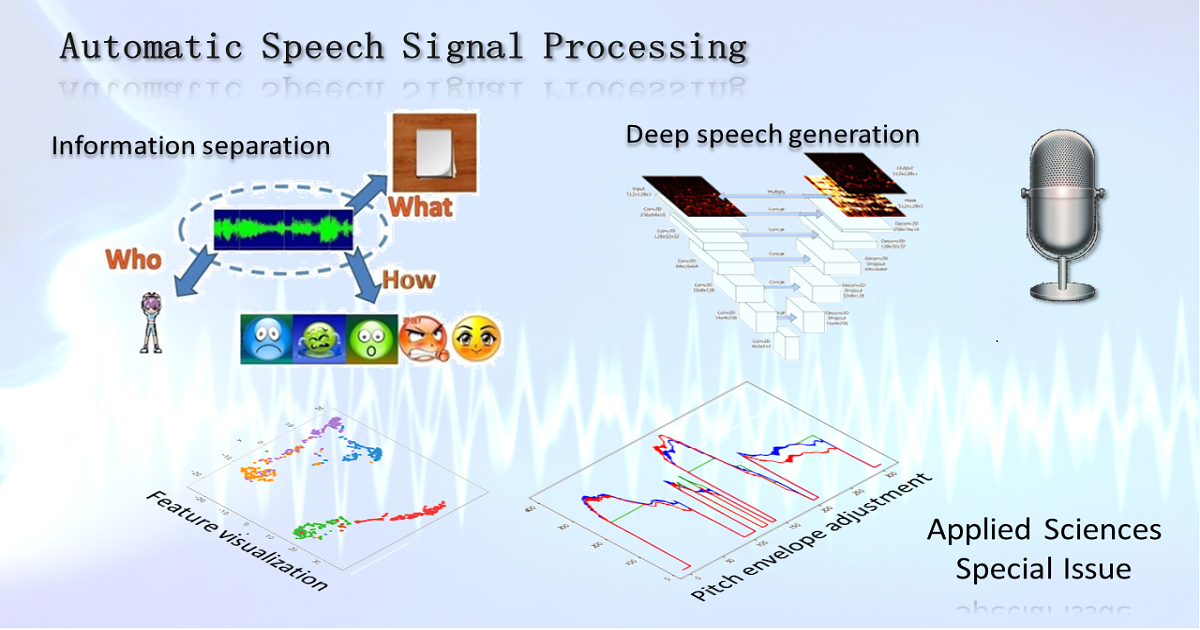- 2.5Impact Factor
- 5.5CiteScore
- 20 daysTime to First Decision
Automatic Speech Signal Processing
Special Issue Information
Dear Colleagues,
Speech signals are an important medium for Human-to-Computer Interactions. Speech has the advantages of easy access, a small amount of data, a non-line-of-sight effect and other advantages. It is also vulnerable to interference, strong information coupling and other challenges. Major progress is being published regularly on both the technology and exploitation of Automatic Speech Signal Processing (ASSP). However, there are still technological barriers to flexible solutions and user satisfaction under some circumstances. This is related to several factors, such as sensitivity to the environment (background noise) or the weak representation of grammatical and semantic knowledge. Current research also emphasizes deficiencies in dealing with variation naturally present in speech. For instance, the lack of robustness to foreign accents precludes use by specific populations. We are interested in articles that explore robust ASSP systems. Potential topics include but are not limited to the following:
- Automatic speech segmentation and phoneme detection;
- Automatic speech recognition with noised speech;
- Automatic speech translation;
- Automatic speech synthesis;
- Automatic classification of emotions in speech;
- Multi-modal speech recognition with video or physiological signals.
Dr. Lijiang Chen
Guest Editor
Manuscript Submission Information
Manuscripts should be submitted online at www.mdpi.com by registering and logging in to this website. Once you are registered, click here to go to the submission form. Manuscripts can be submitted until the deadline. All submissions that pass pre-check are peer-reviewed. Accepted papers will be published continuously in the journal (as soon as accepted) and will be listed together on the special issue website. Research articles, review articles as well as short communications are invited. For planned papers, a title and short abstract (about 100 words) can be sent to the Editorial Office for announcement on this website.
Submitted manuscripts should not have been published previously, nor be under consideration for publication elsewhere (except conference proceedings papers). All manuscripts are thoroughly refereed through a single-blind peer-review process. A guide for authors and other relevant information for submission of manuscripts is available on the Instructions for Authors page. Applied Sciences is an international peer-reviewed open access semimonthly journal published by MDPI.
Please visit the Instructions for Authors page before submitting a manuscript. The Article Processing Charge (APC) for publication in this open access journal is 2400 CHF (Swiss Francs). Submitted papers should be well formatted and use good English. Authors may use MDPI's English editing service prior to publication or during author revisions.

Benefits of Publishing in a Special Issue
- Ease of navigation: Grouping papers by topic helps scholars navigate broad scope journals more efficiently.
- Greater discoverability: Special Issues support the reach and impact of scientific research. Articles in Special Issues are more discoverable and cited more frequently.
- Expansion of research network: Special Issues facilitate connections among authors, fostering scientific collaborations.
- External promotion: Articles in Special Issues are often promoted through the journal's social media, increasing their visibility.
- e-Book format: Special Issues with more than 10 articles can be published as dedicated e-books, ensuring wide and rapid dissemination.

